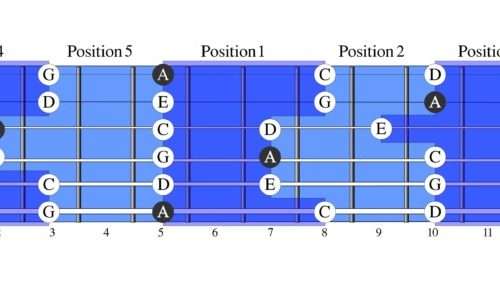Ukulele – Hawaiian folk instrument
Contents
These miniature four-string guitars appeared relatively recently, but quickly conquered the world with their sound. Traditional Hawaiian music, jazz, country, reggae and folk – the instrument has taken root well in all these genres. And it is also very easy to learn. If you know how to play the guitar even a little, you can make friends with the ukulele in a matter of hours.
It is made of wood, like any guitar, and is very similar in appearance. The only differences are 4 strings and much smaller size.
History is a ukulele
The ukulele appeared as a result of the development of the Portuguese plucked instrument – cavaquinho. By the end of the 19th century, it was widely played by the inhabitants of the Pacific Islands. After several exhibitions and concerts, the compact guitar began to attract the attention of people in the United States. Jazzmen were especially interested in her.
The second wave of popularity for the instrument came only in the nineties. The musicians were looking for a new interesting sound, and they found it. Nowadays the ukulele is one of the most popular tourist musical instruments.
Varieties of ukulele
The ukulele has only 4 strings. They differ only in size. The larger the scale, the lower the tuning the instrument is played.
- Soprano – the most common type. Instrument length – 53cm. Configured in GCEA (more about tunings below).
- Concert – slightly larger and sounds louder. Length – 58cm, GCEA action.
- Tenor – this model appeared in the 20s. Length – 66cm, action – standard or reduced DGBE.
- Baritone – the largest and youngest model. Length – 76cm, action – DGBE.
Sometimes you can find custom ukuleles with twin strings. The 8 strings are paired and tuned in unison. This allows you to achieve more surround sound. This, for example, is used by Ian Lawrence in the video:
It is better to buy a soprano as your first instrument. They are the most versatile and easiest to find on sale. If miniature guitars interest you, you can take a closer look at other varieties.
Stroy ukulele
As can be seen from the list, the most popular system is GCEA (Sol-Do-Mi-La). It has one interesting feature. The first strings are tuned like on regular guitars – from the highest sound to the lowest. But the fourth string is G belongs to the same octave, as the other 3. This means that it will sound higher than the 2nd and 3rd strings.
This tuning makes playing the ukulele a little unusual for guitarists. But it is quite comfortable and easy to get used to. The baritone and, sometimes, the tenor are tuned to THEN (Re-Sol-Si-Mi). The first 4 guitar strings have a similar tuning. As with GCEA, the D (D) string belongs to the same octave as the others.
Some musicians also use higher tuning – ADF#B (A-Re-F flat-B). It finds its application specifically in Hawaiian folk music. A similar tuning, but with the 4th string (A) lowered an octave, is taught in Canadian music schools.
Tool setup
Before you start learning the ukulele, you need to tune it. If you have experience handling guitars, there shouldn’t be any problems. Otherwise, it is recommended to use a tuner or try to tune by ear.
With a tuner, everything is simple – find a special program, connect a microphone to the computer, pluck the first string. The program will show the pitch of the sound. Tighten the peg until you get A first octave (designated as A4). Adjust the remaining strings in the same way. They all lie within the same octave, so look for the notes E, C and G with the number 4.
Tuning without a tuner requires an ear for music. You need to play the required notes on some instrument (you can even use a computer midi synthesizer). And then adjust the strings so that they sound in unison with the selected notes.
Ukulele Basics
This part of the article is intended for people who have never touched a plucked instrument, such as a guitar, before. If you know at least the basics of guitar skills, you can safely move on to the next part.
A description of the basics of musical literacy will require a separate article. Therefore, let’s move straight to practice. To play any melody you need to know where each note is. If you are using the standard ukulele tuning – GCEA – all the notes you can play are collected in this picture.
On open (not clamped) strings you can play 4 notes – A, E, Do and Sol. For the rest, the sound requires clamping the strings on certain frets. Take the instrument in your hands, with the strings facing away from you. With your left hand you will press the strings, and with your right hand you will play.
Try plucking the first (lowest) string on the third fret. You need to press with the tip of your finger directly in front of the metal threshold. Pluck the same string with the finger of your right hand and the note C will sound.
Next you need hard training. The sound production technique here is exactly the same as on the guitar. Read tutorials, watch videos, practice – and within a couple of weeks your fingers will be briskly “running” along the fretboard.
Chords for ukulele
When you can confidently pluck the strings and extract sounds from them, you can start learning chords. Since there are fewer strings here than on a guitar, it’s much easier to pluck chords.
The picture shows a list of the basic chords that you will use while playing. Dots The frets on which the strings need to be clamped are marked. If there is no dot on a string, then it should sound open.
At first you will only need the first 2 rows. This major and minor chords from every note. With their help you can play accompaniment to any song. When you master them, you can master the rest. They will help you decorate your game, make it more vibrant and lively.
If you don’t know that you can play the ukulele, visit http://www.ukulele-tabs.com/. It contains a huge variety of songs for this wonderful instrument.
Watch this playlist on YouTube



